Ayodhya: Transforming a flashpoint holy city into the ‘Hindu Vatican’
On a brutally cold morning, Yogendra Guru looked adrift in a maze of traffic after visiting the heavily secured makeshift shrine where Hindus believe Lord Ram was born.
Frenzied construction work provided the backdrop in the northern Indian city of Ayodhya – a vast center to welcome pilgrims, arched sandstone gates, and a broad corridor leading to a brand new $217m (£170m) temple for the Hindu deity. A multi-billion dollar makeover has seen swathes of the city bulldozed to turn it into what some Hindu nationalist leaders are calling a “Hindu Vatican”.
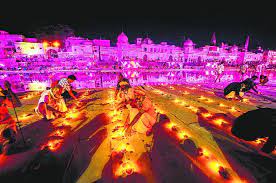
Mr. Guru had endured a grueling 14-hour bus journey with two dozen family members who made the pilgrimage to Ayodhya from their village in Morena district in central Madhya Pradesh state.
“I am elated that we are finally getting a new temple. It seems like the Hindus have awakened, experiencing a sense of freedom. I believe we were previously suppressed,” he told me.
Next week, Prime Minister Narendra Modi will fulfill a decades-long Hindu nationalist pledge by opening the temple, which replaces a 16th-century mosque that once stood here, on one of India’s most controversial religious sites. In 1992, Hindu mobs tore down the Babri mosque, claiming it was built by Muslim invaders on the ruins of a Ram temple, sparking nationwide riots that took nearly 2,000 lives.
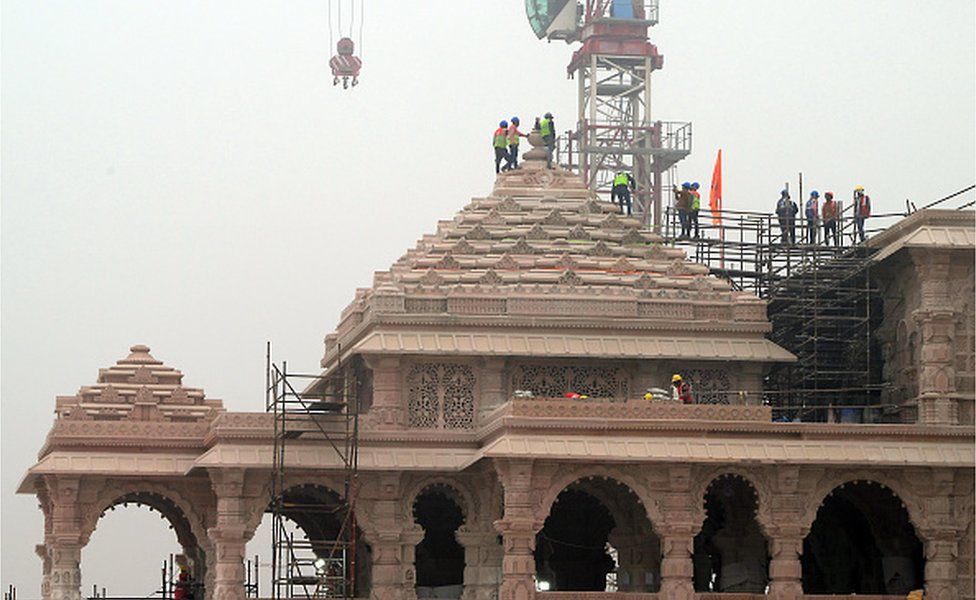
The stormy ownership dispute between Hindus and Muslims ended in 2019 when the Supreme Court granted the site to Hindus, despite explicitly stating that the demolition of the mosque was an “egregious violation of the rule of law”. (The court gave Muslims another plot of land in Ayodhya to construct a mosque.)
Mr Modi opens the Ayodhya temple months before the general elections, with his Bharatiya Janata Party (BJP) eyeing a record third consecutive term. He says the new temple will “unify the nation”. Senior minister Rajnath Singh believes the shrine would mark “the beginning of India’s cultural revival and restore national pride”.
Critics say the timing of the opening leans more towards political strategy than religious significance, building a Hindu nationalist momentum ahead of the polls. After all, they argue, the movement to build a temple was a major factor in propelling the BJP to a prominent position in Indian politics.
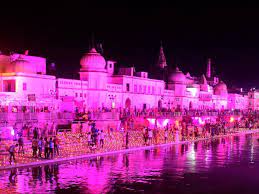
“After enduring life in a tent, Lord Ram has now found a rightful abode. It’s been a test of patience for all of us,” said Satyendra Das, the 86-year-old head priest of the makeshift shrine, where a smaller idol of Ram had been placed for the past three decades.
The new temple is as grand as it gets. Stretching across 7.2 acres in a 70-acre complex, the imposing three-story structure, clad in pink sandstone and anchored by black granite, boasts towering pillars and rests upon 70,000 sq ft (6,503 sq m) of pristine white marble. A 51-inch (4.25-ft) idol of Ram will be placed on a marble pedestal.
When fully complete – Mr. Modi will be opening only the ground floor on 22 January – by the end of the year, the temple will expect to greet a staggering 150,000 visitors per day, seven times the current rate.
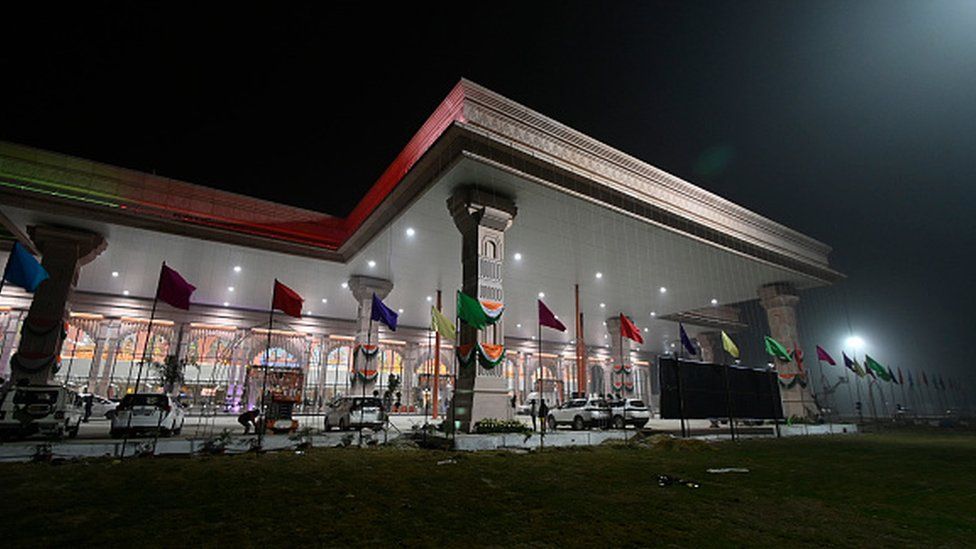
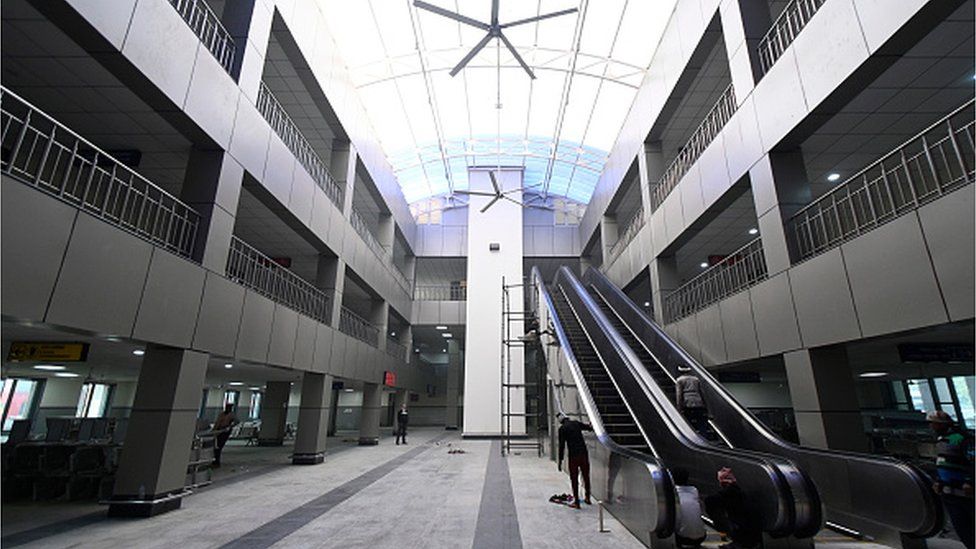
To make all this happen, Mr Modi’s government is pulling out all the stops to transform Ayodhya, a tranquil pilgrim town on the banks of Saryu, a tributary of the Ganges, to what officials call a “world-class city where people come as pilgrims and tourists”.
The $3.85bn (£3.01bn) makeover includes expanded roads, a shiny new airport, a massive railway station, and a multi-level car park. More than 3,000 homes, shops and “structures of religious nature” have been either completely or partially demolished to facilitate the widening of four main roads, including the newly christened 13km (8-mile) Ram Path, leading to the temple. A lighter yellow paint now gives the buildings a uniform, bland look.
Hotel chains like Radisson and Taj are building new properties; up to 50 new hotels and homestays are planned, while scores of grubby guesthouses are receiving facelifts. Not surprisingly, land prices have already trebled.
“You can’t recognize the place, it’s changed so much now. There’s a bit of shock and awe that all this has happened,” said Valay Singh, author of Ayodhya: City of Faith, City of Discord, who has been visiting the the city since 2016.
There are also plans for additional attractions surrounding the new temple, including a heritage walk featuring 162 murals depicting Ram’s life, a facility on a Saryu river island that offers “insights into the Vedic civilization”, and the creation of a wedding city and developing the place as a naturopathy center.
“We want to create the most beautiful city in the world,” says Gaurav Dayal, Ayodhya’s most senior official.
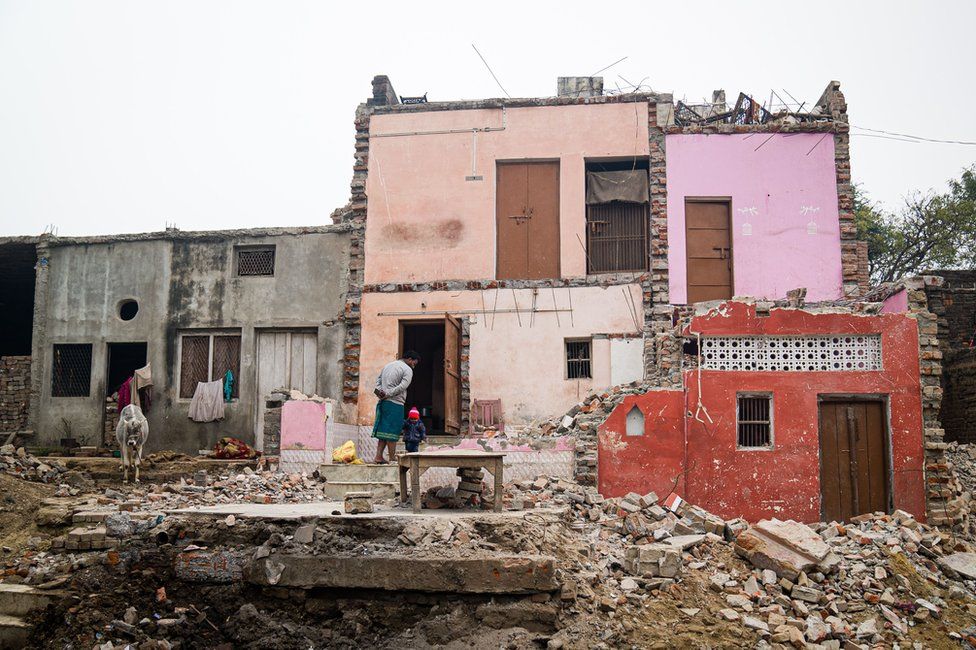
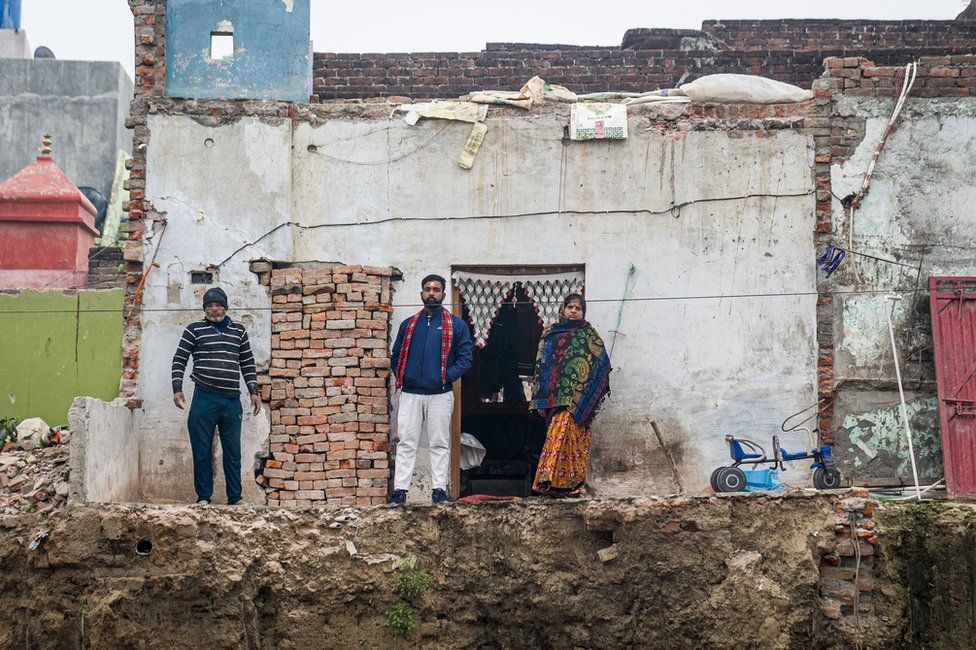
Faith threads its way through every facet of life in Ayodhya, where temples rise like sentinels in an untidy skyline and monks walk the streets. Tens of thousands of pilgrims circumambulate the city at least twice a year. The ubiquitous monkeys still have a free run. Bazaars teem with hawkers selling religious bric-a-brac: flowers, sandalwood, devotional books, and replicas of deities.
Mr. Singh describes it as a “fragile, pilgrim-dependent economy”. On her first visit to the city, Disha Chakraborty, a student of life sciences from Shillong in north-eastern India, told me: “This place is dilapidated, let’s be honest. But it doesn’t matter because people are so devoted. So many have put their collective faith in an idol.”
Yet, in this city of both a few thousand temples, large and small, and 45-odd mosques, and festivals and fairs, a transformation is underway, blending the old with the new.
As well as tattoo parlors and takeout food, Ayodhya has a restaurant called Dark Cloud and a salon called Stylish Chand Men’s Parlour, offering a variety of style cuts. Laser shows light up the sky after the dark. The place swarms with competing YouTubers and Instagram Reel makers, each trying to make the place “trend”.
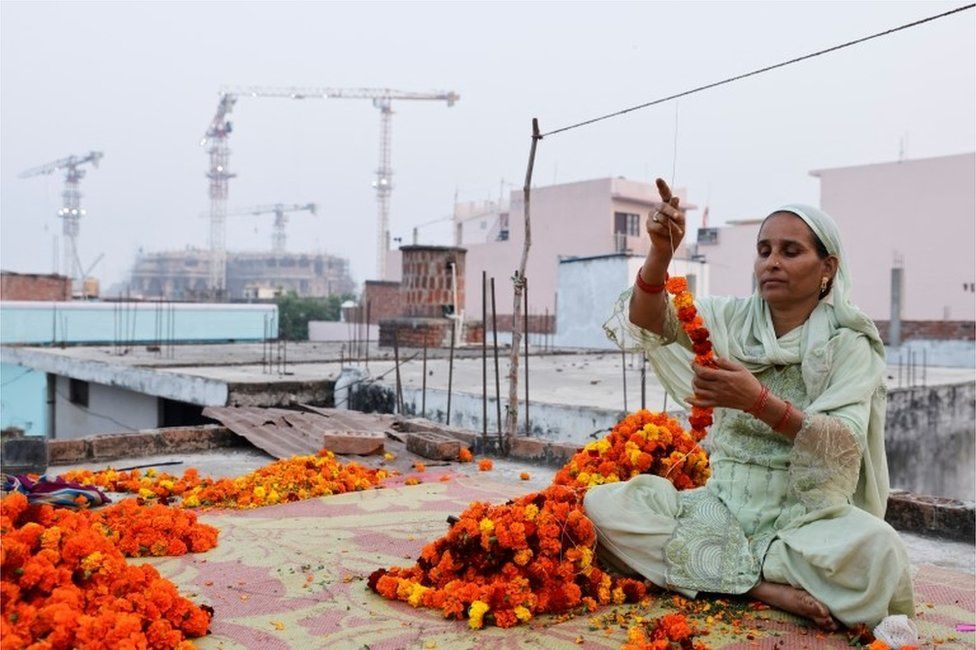
Inspired by faith, tradition, and curiosity, millions of devotees and tourists are now expected to descend on Ayodhya after the new temple opens. Yet, even in its peace, there are rumblings of discontent. The road-widening initiative for pilgrims slices through the city, leaving a trail of homes and shops smashed by bulldozers.
Anand Kumar Gupta, who heads an association of local shopkeepers, said around 1,600 of them have “been displaced and have nowhere to go”. He added that they were paid an average of 100,000 ($1,200) rupees for repairs. “This rebuilding has disturbed us,” he said.
On a pilgrim route being widened, some three dozen homes of people who work in the city’s temples stand partially demolished. The street is overflowing with sewage from leaky pipes. Wobbly bamboo bridges stretch precariously over muddy trenches that scar the ground outside the doors. Owners of the destroyed homes have been given plots at a distance.
Vishal Pandey said that half of his ancestral six-room house had been demolished for the road widening. Despite a compensation close to 700,000 rupees for the affected portion, the toll on their eight-member generational dwelling is irreversible, he added. “There is anger among the locals,” Mr Pandey told me. “But we are also happy that Ram is finally getting a permanent home. He was in a tent for such a long time. Now it’s our turn [to suffer].
“Where there is destruction, there is development. Let’s see what happens.”
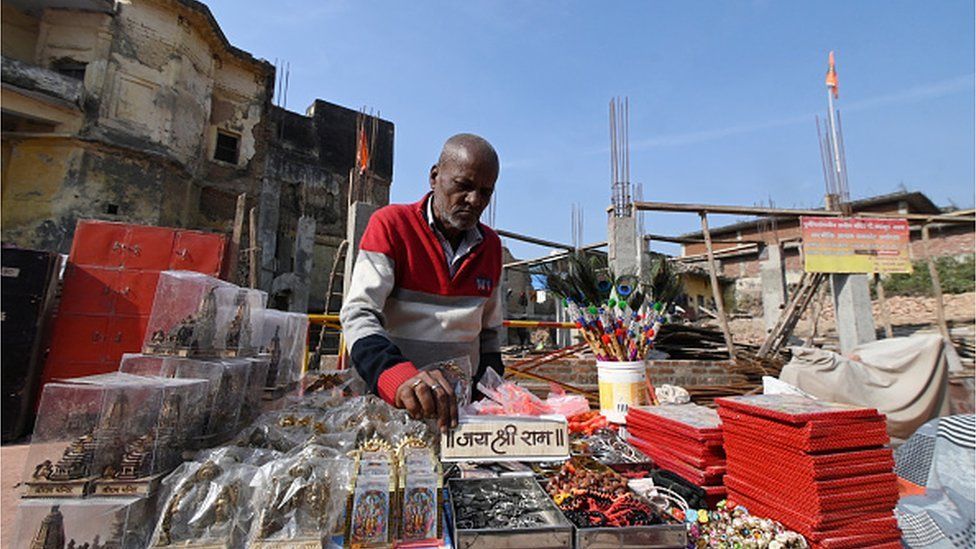
Kanti Devi, who has lost half of her house, is more trenchant. “We are not happy at all,” she says. “Even the officials come and tell us we are giving you a lot of pain. It’s good that the temple has been made, but how does it help us? Whatever we built, they have razed to get more pilgrims into the town.”
Officials say residents of the demolished dwellings and shops have been compensated with money and new houses under government schemes. “All compensation has been given. It is delayed in some cases because of litigation involving family disputes. There’s nothing left to be done now,” says Mr Dayal.
In many ways, people coming in from outside have shaped the destiny of Ayodhya where Hindus and Muslims have long lived in mixed neighborhoods. This endured despite the demolition and a subsequent attack on local Muslims in December 1992, allegedly leading to the death of 18 Muslims and the torching of their homes. It was a city that became a flashpoint for religious violence.
“We have moved on. However, the events remain a source of pain for us,” said Khaliq Ahmed Khan, a social worker.
Mr Khan believes Hindus and Muslims share warm relations in Ayodhya, rooted in a centuries-old inter-dependence. “Hindu devotion to Ram is intertwined with the support of Muslims, particularly in the temple economy, where their trade plays a crucial role. The two communities are inseparable.”
This sentiment is echoed by Raghuvansh Mani, a local college professor: “The sectarian strife originated from outside; the local people have minimal involvement in that.” Some locals share similar sentiments, feeling that outsiders are determining their fate, as the new temple aims to open Ayodhya to the world.
“Only time will tell,” says Mr Pandey.
Source:-https://www.bbc.com/news

